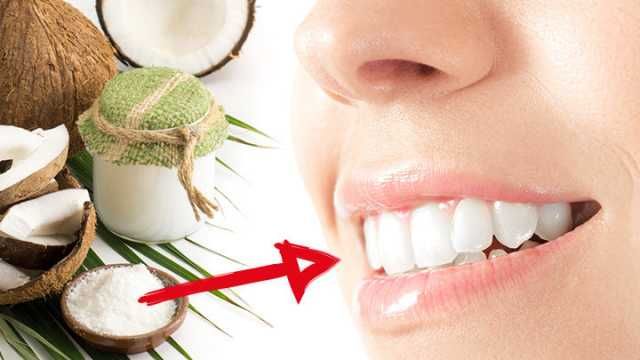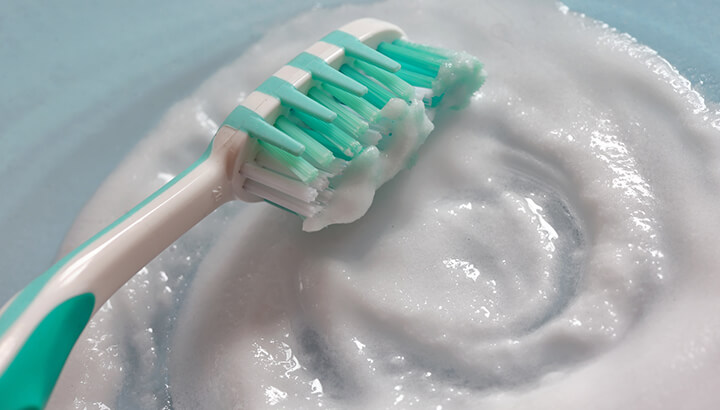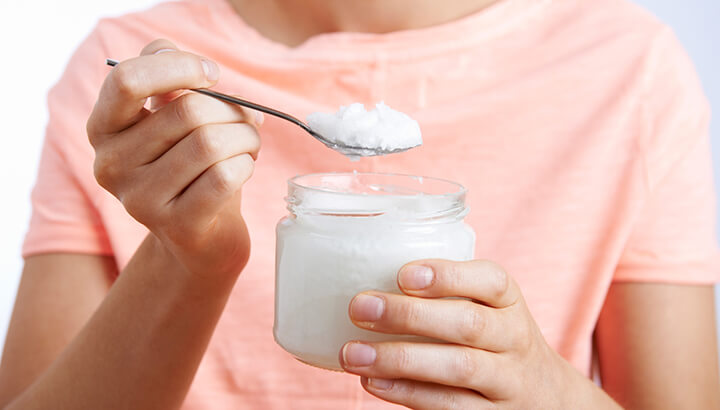
Everyone wants a smile that shines — and the best way to achieve this is to brighten up those pearly whites, right? Considering Americans spend nearly $1.5 billion a year on over-the-counter teeth whitening products, I think it’s safe to say that having whiter teeth is a common goal across the general population. Perhaps you fall into this category and contribute to this annual stat.
If so, you’re clearly not alone. We’re so quick to pop to the store, grab the cheapest available whitening strips and then put them in our mouths. But what are these products made of? Are they your only option when aiming to whiten your teeth? Can you achieve optimal results naturally, in the comfort of your home?
The problem with conventional teeth whiteners
Teeth whitening is the leading dental procedure requested by individuals of all ages. Based on this “need,” oral health companies have jumped at the opportunity. If you smoke or drink a lot of coffee, for instance, you may notice stubborn surface stains. These contribute to the yellowing of your teeth, known as extrinsic stains.
In more severe cases, stains will be intrinsic — occurring in the inner structure of the tooth. Over time, a combination of these two stains leads to age-related discoloration. Yellow teeth may be a sign that your oral health needs work. However, an overly white, blinding smile isn’t necessarily normal either.
We often see celebrities with the whitest teeth imaginable. And now, if your teeth aren’t the color of snow, they’re considered to be less than ideal. We’re creating unrealistic expectations about the way we should look. The truth is, your teeth could most certainly be a slight shade of yellow and be perfectly healthy. So why introduce potentially harmful additives?
The dangers of hydrogen peroxide
Whether you seek whiter teeth through your dentist, or purchase one of many over-the-counter products, these methods generally rely on hydrogen peroxide. This ingredient irritates and damages both your gums and nerves. It may also cause some individual’s teeth to become more sensitive.
Within one study, after surveying 100 people, researchers found that half experienced mild to moderate sensitivity following the use of an over-the-counter whitening gel. To make matters worse, one in five experienced sharp, significant pain. In severe cases, individuals have experienced painful internal damage, after chemicals seeped into a crack in their tooth or an unfilled cavity.
Exclusive: Three Ways Coconut Oil Can Improve Oral Health
Try this all-natural method instead

I can’t stress this enough — work with your body when you’re trying to achieve a certain health or beauty-related goal. More often than not, this will lead to more sustainable, long-term results. It’s all about creating new habits that promote positive oral health. These ensure optimal results without much effort.
So, I want to start off by saying, positive oral health is an everyday commitment. You can start a range of effective natural teeth whitening regimens that may remove surface stains. But, you’ll want to actively maintain this look. In turn, this will allow you to achieve healthier teeth, gums and even protect your heart or gut health.
I am going to focus on an initial treatment that will allow you to target yellowing teeth. I’ll follow this by an effective plan to continue experiencing positive oral health benefits. This treatment uses ingredients you likely already have in your home. It is a cheap and effective method that will not threaten your oral health and well-being.
The benefits of coconut oil and baking soda
When you make your own coconut oil and baking soda toothpaste, you will avoid harmful chemicals, including fluoride. In addition, you will instantly whiten and brighten your smile. By combining coconut oil, baking soda and peppermint essential oil, you can easily create your own DIY remedy. It will prevent tooth decay and reduce the look of stains.
Coconut oil offers a rich source of lauric acid, which fights harmful plaque. As tartar and plaque build, this can rapidly lead to discoloration. Since this ingredient will also reduce bacteria, you will experience fresher breath and healthier gums. Although an effective solution on its own, adding baking soda can really amp up the overall whitening effect. The addition of peppermint essential oil “freshens” your breath. It also targets bacteria while offering a cooling sensation — which feels great on your gums.
Like many man-made items, personal hygiene products often look to nature for effective solutions. If you look at the ingredient list on conventional toothpaste, you’ll notice the addition of baking soda. Due to its natural whitening properties and mildly abrasive properties, stains can be effectively brushed away. Within one study, published in the Journal of Clinical Dentistry, researchers found that toothpaste containing baking soda was more effective at removing stains.
In fact, those who did not use options that contained baking soda did not benefit from the removal of intrinsic tooth stains. On the other hand, all four baking soda-based experimental groups did. This effect was dose dependent, meaning the higher the concentration, the greater the effect. The researchers also stated that the majority of this whitening effect occurred within the first 30 minutes of brushing.
Enhanced brushing, flushing and oil pulling

Remember how I mentioned the importance of everyday maintenance? Well, here are a few additional tips to maintain the look of your teeth, while ensuring optimal oral health. Just like any other aspect of your health, small daily changes can lead to beneficial long-term habits.
- Brush like you mean it. When you brush, you want to remove as much plaque as possible. Be sure to brush for a minimum of two minutes, before targeting your gum line and tongue. No need to be rough! Whenever possible, brush after eating. Oral bacteria feeds on sugar, leading to increased acidity and possible enamel damage.
- Use an oral water irrigator. Brushing alone will not always get rid of all the plaque within your mouth. You need to target potential colonies of bacteria along the gum line. Although flossing is an option, it’s best to flush out “pocket bacteria” with an oral water irrigator.
- Try oil pulling. Although one of the latest trends, oil pulling is far from a fad. It dates back thousands of years within Ayurvedic medicine. Daily oil pulling can significantly improve oral health. You can learn all about the benefits of oil pulling, as well as how to do it here.
- Eat clean. There are many functional foods that not only provide nutrition but also promote greater efficiency within the heart, liver and even your mouth. Some of the best foods to target bacteria and plaque, while maintaining healthy enamel and overall health, include green tea, cheese, leafy greens, fish, apples, almonds and carrots.
Toss those questionable whitening strips! Get back to the basics and proudly show off that beautiful smile of yours.
— Krista Hillis

